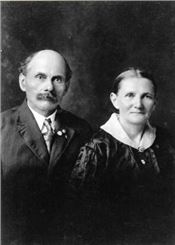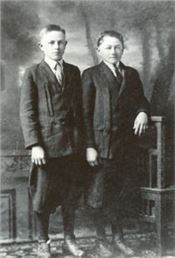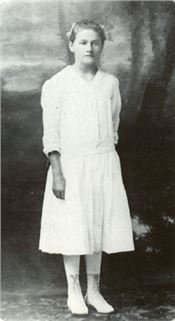|
Today’s Coronovirus Spurs Memories Of Local Losses From Spanish Flu

BETTY VALLE GEGG NAEGER
MidAmerica Farmer Grower
STE. GENEVIEVE, MO.
Memories flood my thoughts as Covid-19 spreads across the globe, since my ancestral family was especially traumatized by the influenza epidemic that struck this area from 1918-1920. In February of 1920, the pandemic reached my grandparents’ home off Highway H near St. Mary, in Perry County, Mo. The tragedy reduced the household of six to only two within 10 days.
While I can’t give an eye-witness account, I heard the story often in my childhood. My mother was one of the two who survived, and as she recalled it, the tears flowed.
It was Saturday, Feb. 7, 1920, when my grandfather, Joseph Breig, contracted the flu in early morning, and by afternoon he had lost his life. His 17-year-old son, Edward Lawrence, also became ill later the same day and passed away that night. Two days later on Monday, Feb. 9, 14-year-old Clara died about 3 pm., and the following week on Tuesday, Feb. 17, my grandmother, Catherine Braun Breig, lost her life to the illness. St. Mary’s Doctor J. A. Wilkins attended to the family, but he was unable to cure the illness.
My mother, Elizabeth Breig Valle, who was 26 at the time and living in the family home, also became ill, and she received the last sacraments of the church, but she recovered. I’m not sure if her brother, William Matthew, twin brother of Edward Lawrence, came down with the flu, but he also was a survivor. There were two other sons and two other daughters in the family, but they were living in their own homes. This was always hard for my mother to talk about, and as a child growing up, I couldn’t really get into the pain she must have felt.
Lately, I’ve been comparing the conditions today with the trauma experienced then. Hand washing is stressed now, but 100 years ago there was no running water in the small town farmhouse. As I recall conditions from my own childhood, without running water, everyone in the household washed their hands in a pan of water on a washstand, and the water was changed only when it was visibly dirty, hardly a sanitary way. We also have hand sanitizer today, but the only thing they had that was close to that was a bottle of whiskey, or maybe moonshine, and no one used that for hand washing.
A documentary I once saw on TV confirmed there was a quarantine back then, but how do you quarantine anyone when almost all in the household come down with the illness and a farmhouse isn’t that big. Also, farmers had animals to care for, so no one collapsed in bed until there was no strength left to move.
Pictures in the documentary showed people wearing masks, and the account also revealed that almost everyone was sick, and there weren’t enough people well enough to hold funerals. “They just stacked them up,” the documentary reported, and they couldn’t have had refrigerated trucks for that then.
People probably got their news about the pandemic back then from the local newspaper as they had no radio, much less a telephone, TV, or computer. Either that, or they learned about happenings at the local pub or watering hole, or when someone close became ill. Today, I have many ways to get the news and connect with others and the world, beginning with my cell phone which is always in my pocket. I also can video chat with family nearby and out of state on FaceTime, Messenger and, though I’ve never used it, large meetings can be held on Zoom.
A few years ago, I read the book, “FLU, The Story of the Great Influenza Epidemic of 1918 and the Search for the Virus that Caused it,” by Gina Kolata, New York Times best selling author. She recorded how scientists set out to find and isolate the virus that caused the Flu of 1918 and unlock the key to finding a vaccine. After interviews and searching throughout the world, they finally found the pathogen preserved when they exhumed the frozen bodies of some who had died of the flu and were buried in the permafrost of Alaska. That’s when they determined the makeup and named it the H1N1 flu, a disease that still threatens many each year today. However, we have a vaccine for that now.
It seems most of us were surprised by today’s pandemic. We have come to rely on vaccines for everything from polio to measles and numerous other maladies, and we gave little thought that this virus today could take lives as it has. However, until a reliable vaccine can be developed and administered on a huge scale, we’ll have to continue social distancing, wearing masks, constant hand cleaning and touching our faces only after our hands are thoroughly sanitized. ∆


|
|